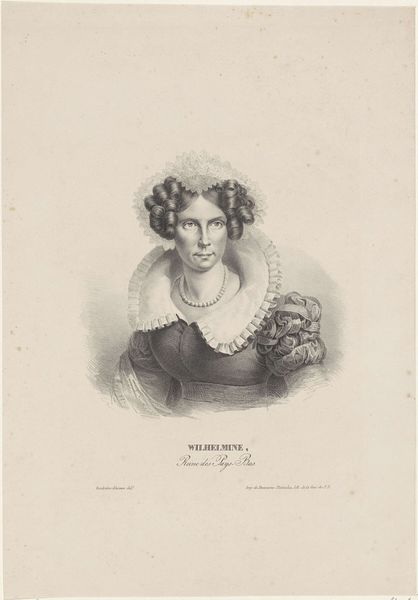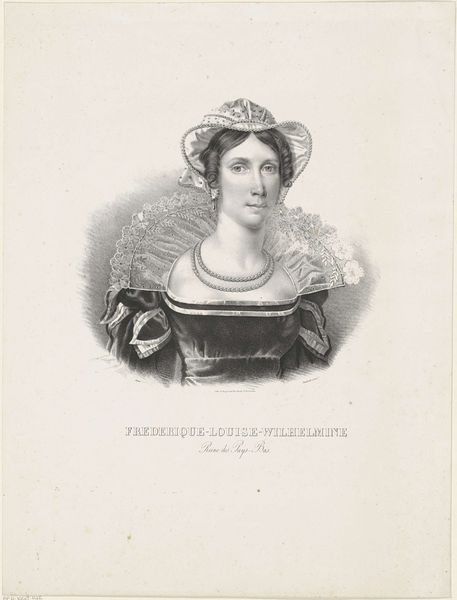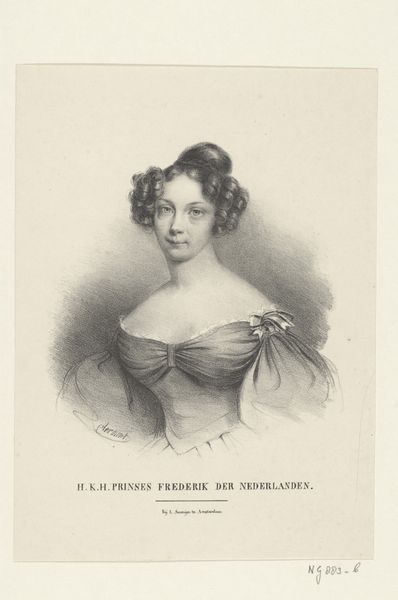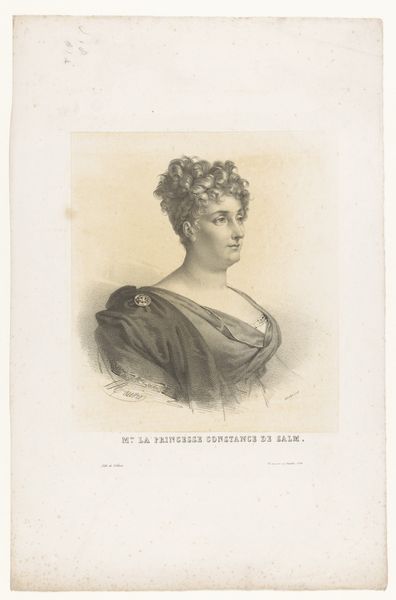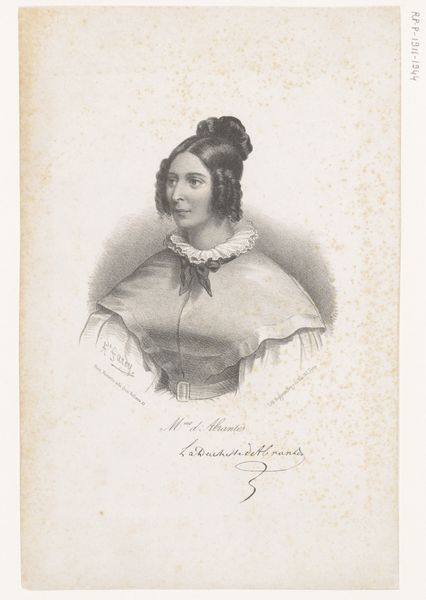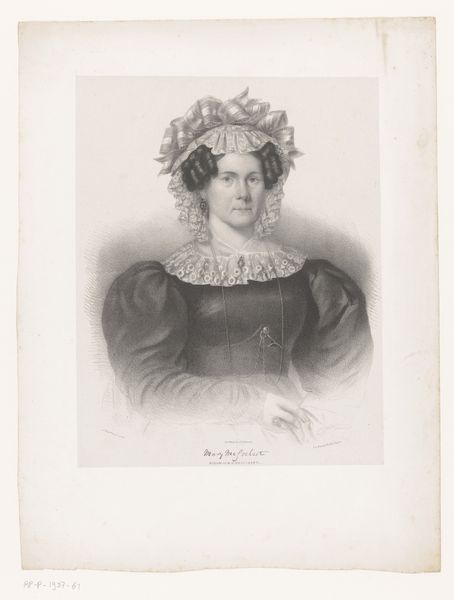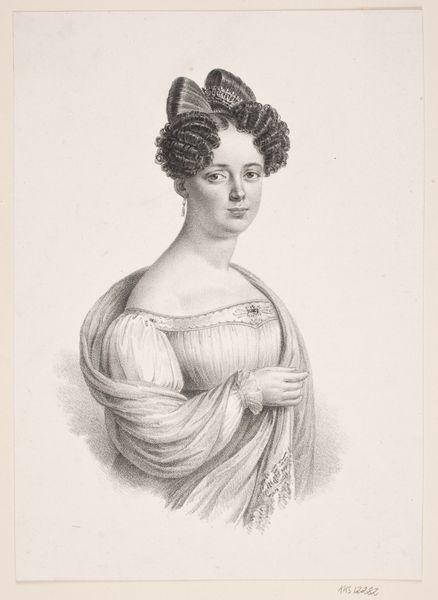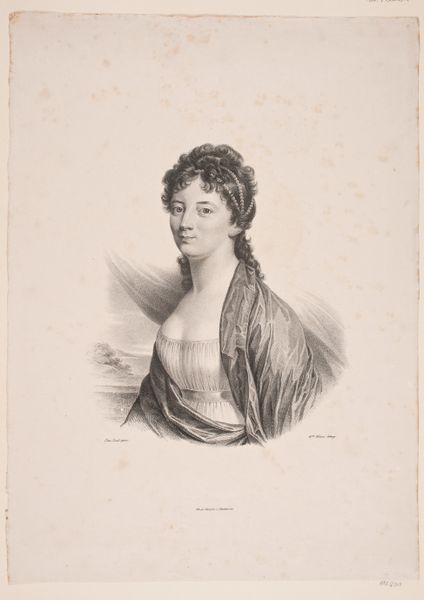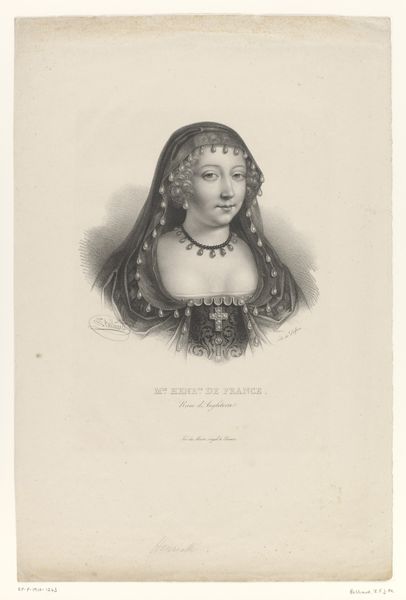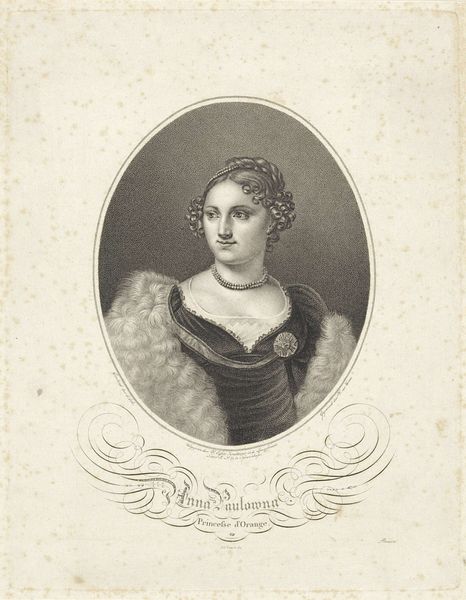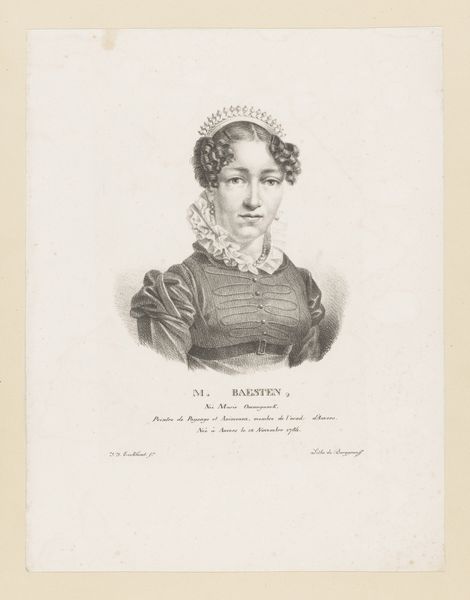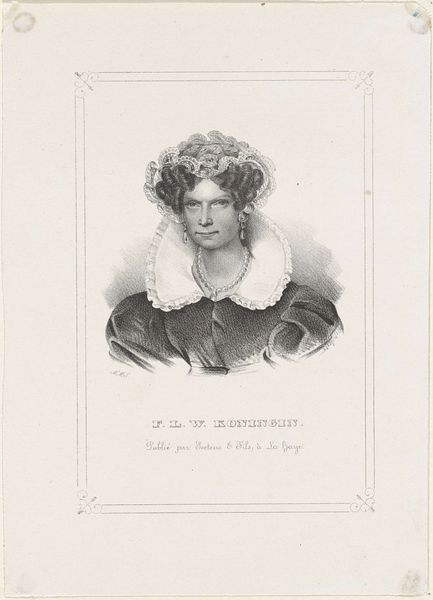
print, engraving
#
portrait
#
pencil drawn
# print
#
pencil sketch
#
old engraving style
#
pencil drawing
#
history-painting
#
academic-art
#
engraving
Dimensions: height 308 mm, width 233 mm
Copyright: Rijks Museum: Open Domain
Curator: Before us we have a print titled "Portret van Wilhelmina van Pruisen," dating from 1815 to 1899. The medium is listed as engraving. Editor: The delicate hatching really draws the eye. It almost seems photographic in its rendering of fabric and skin texture, though softer, dreamier. It also looks somehow...stern. Curator: Engravings in this era were largely reproductive, disseminating images for wider consumption. It would be interesting to know who created the matrix. This kind of meticulous line work suggests skill and access to specialised training. What sort of labor went into the image and what sort of resources went into that? Editor: The queen's jewelry is intriguing – a doubled necklace and a prominent pendant. The tiara, more understated, and the ruff call to mind eras past; all these choices of adornment clearly carry meaning related to dynastic power and its visual display, its continuity through inherited wealth, family, and titles. Curator: And what about the paper it’s printed on? Was it locally sourced? Was the manufacturing of paper related to particular local environmental issues? The engraving style makes you wonder: to what extent was there cooperation, or at least dialog, among studios during this time period? Were techniques being traded, refined and copied widely, perhaps accelerating output? Editor: I read the pose, the tight curls framing her face, the high neckline as signifiers of status, but also of a particular personality. There is perhaps something in the sternness, as I mentioned, reflecting duty, gravity. We might ask: How was the Queen attempting to project an image, and what stories were contemporaries ascribing to that image, willingly or not? Curator: Indeed. If we look at the global production networks tied into creating the pigments, or refining the metals for the engraving plates, this seemingly simple portrait opens up questions of the Netherlands' role in international trade. Editor: Yes, the print gives us insight not just into this personage and her presentation but into social and political structures in place. Considering all those intricate material details helps uncover those many complex relationships that extend from one symbol-laden image.
Comments
No comments
Be the first to comment and join the conversation on the ultimate creative platform.
